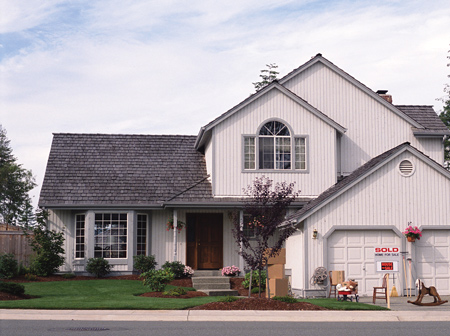|
|
YOUR HOMEINEXPENSIVE HOMES ARE DRAWING INVESTORS AND HOUSE FLIPPERS Last year, when Warren Buffet called single family homes an attractive investment, he was apparently preaching to the choir. Investors and investment companies snapped up 100,000 homes in the first half of 2012 according to real estate research firm RealtyTrac. Distressed, foreclosed homes in the states hardest hit by the real estate crisis have been purchased at lowball prices by investors who hope to make necessary improvements and then resell fast. After making essential repairs the homes are selling, on average, at markups of $29,000. That is just one of the reasons why, as before the housing bubble, in many areas there are more buyers than homes available. Some flippers are updating homes to use as rental properties. The ventures should be profitable for years to come considering the high demand for rental homes and an outlook of rising rents. Blackstone Group spent more than $1 billion on 6,500 foreclosed homes throughout the United States. Most of them will be repaired and rented. According to Time, house flipping might seem vulture like, but in many ways it's good for communities. At least, homes that are purchased for quick sale get fixed up. Otherwise they become eyesores as they steadily deteriorate drawing people and animals looking for a deserted flophouse.
OPEN END ADJUSTABLE RATE MORTGAGES We've found our dream home. Our lender suggests we finance with an open end adjustable rate mortgage. Is that a good idea? That depends on your personal circumstances. The open end mortgage is a legitimate instrument and works well for some people. I personally would rather have a regular ARM or a fixed rate 15 or 30 year mortgage. Regardless of the type of loan you choose, your dream home will require a jumbo mortgage which means you'll borrow at least $625,000. Interest wise, the jumbo can be a good deal sometimes having a lower interest than a regular 30 year fixed rate mortgage. Today, adjustable rate mortgages account for 30 percent to 40 percent of private jumbo loans at Bank of America and about half of the private jumbo loans by NASB Financial, the holding company of North American Savings Bank. How ARMs work. All ARMs have a fixed rate for a certain number of years before they become variable usually resulting in a significant increase in the interest rate. A five year fixed rate is typical, but the time period can be as long as 10 years. Note that ARMs got a bad name during the housing bust because borrowers couldn't afford the higher interest when the original terms expired. Since you are a high net worth buyer your risk of being unable to make monthly payments when the interest rate rises is small.
WOULD YOU ADVISE REFINANCING OUR HOME AT A LOWER INTEREST RATE? Maybe. When interest rates are low some homeowners rush to refinance before evaluating the true consequences of their actions. A mortgage refinance can benefit you if you intend to stay in your home for the long term, and if it significantly reduces your interest rate. But a mortgage refinance can also be the wrong move. Don't make a poor decision based on interest rate envy. There's more to it than being able to brag to your neighbors about your lower interest rate. The objective of a new loan
A current appraisal might show that your home is worth less than you assumed. Fannie Mae and Freddie Mac have added fees on loans with a high loan-to-value. If you find you have little or no equity, you may qualify for a refinance under the government's Home Affordable Refinance Program, or HARP, if you have a current mortgage owned or guaranteed by Fannie Mae or Freddie Mac. The beauty of the HARP program is that it does not require an appraisal. If you suspect you are underwater on your loan this could be a good option. Still, be sure you compare the rate and fees to see if the new loan is worth the cost.
Cold weather is here and you're probably wondering how to pay less for heating than you did last year. You could buy an energy audit for a detailed diagnosis of your home or you could do a few things yourself that could lower energy costs significantly, say the experts at CNNMoney.com.
© 2013 TLC Magazine Online, Inc. |
